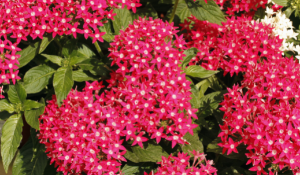Perennial flowers provide food sources for a huge array of beneficial insects, including bees and butterflies. Flowers also provide that all important biodiversity, fragrance and colour, and they can even be edible and picked for the vase.
Here are a few long-lasting hardy flowering choices to consider adding to your flower or edible garden.
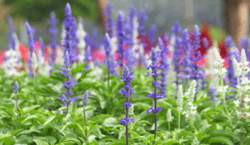 Salvia: This would have to be one of the largest and most varied group of popular flowering perennial plants. Definitely bee and butterfly attracting, salvias come in all colours imaginable (including brown!) and varying heights too - from 30cm to 3m. Which one you choose to grow depends on your garden space, needs and availability. To keep salvias looking their best prune them hard several times per year and fertilise afterwards to encourage new growth and flowers.
Salvia: This would have to be one of the largest and most varied group of popular flowering perennial plants. Definitely bee and butterfly attracting, salvias come in all colours imaginable (including brown!) and varying heights too - from 30cm to 3m. Which one you choose to grow depends on your garden space, needs and availability. To keep salvias looking their best prune them hard several times per year and fertilise afterwards to encourage new growth and flowers.
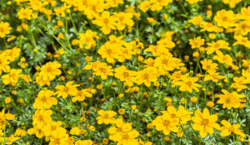 Bidens: Kind of new on the perennial flowering scene, the Bidens are a lovely, hardy low growing group of plants. The flowers come in yellow, orange, cerise, pink, and pink and white. They vary in height from ground covers to around 30cm. Great for pots, basket planting combos, garden beds and borders.
Bidens: Kind of new on the perennial flowering scene, the Bidens are a lovely, hardy low growing group of plants. The flowers come in yellow, orange, cerise, pink, and pink and white. They vary in height from ground covers to around 30cm. Great for pots, basket planting combos, garden beds and borders.
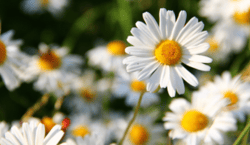 Daisies: This is one of the largest groups of flowering plants – Asteraceae. The multitude of daisy genus’ and species is vast. Some of the more readily available and showy are the ‘Marguerite daisy’ Agryanthemum cultivars and the ‘African daisy’ Osteospermum cultivars. Both come in a multitude of colours and heights.
Daisies: This is one of the largest groups of flowering plants – Asteraceae. The multitude of daisy genus’ and species is vast. Some of the more readily available and showy are the ‘Marguerite daisy’ Agryanthemum cultivars and the ‘African daisy’ Osteospermum cultivars. Both come in a multitude of colours and heights.
 Buddleia: Often called the ‘Butterfly bush’ because butterflies love their showy nectar filled flower heads. They come in mauve, purple, cerise, pink, white and yellow. Older varieties grow up to 3m but these days there are quite a range of dwarf cultivars only growing to 1 to 1.5m. Perfect for pots or the smaller garden.
Buddleia: Often called the ‘Butterfly bush’ because butterflies love their showy nectar filled flower heads. They come in mauve, purple, cerise, pink, white and yellow. Older varieties grow up to 3m but these days there are quite a range of dwarf cultivars only growing to 1 to 1.5m. Perfect for pots or the smaller garden.
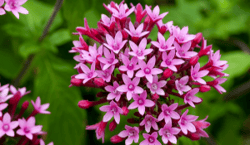 Pentas: This perennial flowering shrub is another favourite with the butterflies. The beautiful flower heads consist of a multitude of tiny star-shaped flowers. They come in white, mauve, red, all shades of pink and purple and there are even two-tone ones as well. Depending on variety they can grow anywhere from 25cm to 1.2m. Plus they are edible.
Pentas: This perennial flowering shrub is another favourite with the butterflies. The beautiful flower heads consist of a multitude of tiny star-shaped flowers. They come in white, mauve, red, all shades of pink and purple and there are even two-tone ones as well. Depending on variety they can grow anywhere from 25cm to 1.2m. Plus they are edible.
Looking for more great gardening info like this? Subscribe to the Better Earth Program to receive Better Earth Secrets Magazine direct to your inbox each season.
_MEB.png?width=842&height=596&name=RP_HorizontalColour(R)_MEB.png)

